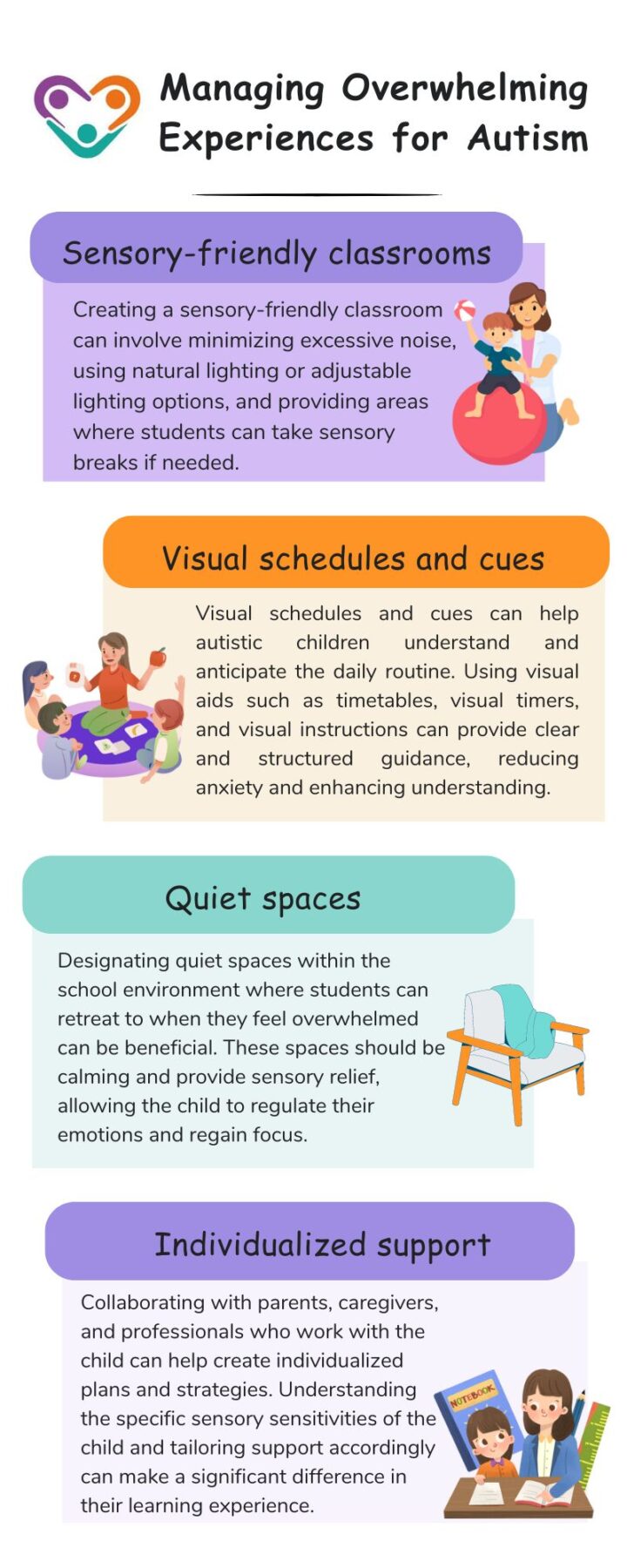
Table of Contents
It’s important to understand the relationship between autism and learning disabilities. Research conducted by the Center for Disease Control and Prevention (CDC) indicates a strong overlap between autism and learning disabilities, with approximately 60-70% of individuals with autism also experiencing a learning disability.
Overlapping Conditions
Autism, also known as Autism Spectrum Disorder, is a neurodevelopmental disorder that affects behavior, communication, and social interaction. It is often accompanied by various learning disabilities, further impacting an individual’s educational journey.
One of the most common comorbid learning disabilities in autistic children is reading disabilities. Research suggests that children with autism are at a higher risk for reading and learning difficulties compared to their neurotypical peers. These difficulties can manifest in areas such as reading comprehension, decoding, and fluency.
Common Learning Challenges
Children with autism may face a range of common learning challenges that can affect their educational experience. Language development plays a crucial role in the learning process, and delays in language skills are often observed in children with autism. Language skills, including vocabulary acquisition and expressive language abilities, strongly predict later academic performance in school-aged children.
Furthermore, autistic children often process information differently. While they may possess enhanced visual processing skills, they may struggle with processing information presented verbally or in written form. This can lead to difficulties in understanding abstract concepts and comprehending complex instructions.
In addition to these challenges, autistic children often have specific learning preferences. Many of them thrive in visual learning environments, where information is presented through visual aids, diagrams, and images. They may also benefit from structured environments and predictable routines. Changes in routines or tasks within a classroom setting can be challenging for them to adapt to.
Predicting Academic Performance
The language abilities of autistic children can provide insights into their potential academic performance. Early language delays and difficulties can act as indicators of later academic challenges. However, it is important to note that each individual with autism is unique, and their learning trajectory may vary.
While some children with autism may face significant language and communication difficulties, others may develop alternative ways of expressing their needs and understanding information. For example, they may not respond when you call their names, smile when you smile at them, or notice facial expressions. Instead, they may have their own way of communicating needs, such as leading parents by the hand instead of pointing.
Understanding the language profile of individuals with autism can help parents, caregivers, and educators tailor their approaches to support their learning experience. By recognizing and addressing language difficulties in a supportive and inclusive environment, individuals with autism can be empowered to reach their full potential and thrive academically.
Different Processing Styles
As mentioned, many children with autism process information differently compared to their typically developing peers. While they may possess enhanced visual processing skills, they may face challenges with processing information presented verbally or in written form. This can impact their ability to understand and engage with certain academic materials.
Autistic individuals often excel in noticing details and patterns, which can include learning letters, numbers, and shapes more easily than their peers. However, they may struggle to see the big picture and understand the context in which these details are embedded. As a result, they may require additional support to connect individual details and develop a comprehensive understanding of the subject matter.
Challenges with Abstract Concepts
Understanding abstract concepts can be particularly challenging for individuals with autism. Abstract concepts refer to ideas or principles that are not easily visualized or tangible. Autistic individuals may struggle with comprehending and grasping these concepts due to their preference for concrete and literal thinking.
The ability to understand and use figurative language, such as idioms or metaphors, can be especially challenging for individuals with autism. This can impact their verbal comprehension and expression, which may be required in standardized testing or classroom discussions. Difficulties with abstract concepts can persist as autistic individuals grow older, affecting their academic performance in school settings.
To support individuals with autism in learning abstract concepts, educators and caregivers can utilize visual aids, real-life examples, and explicit instruction to make these concepts more tangible and accessible. By breaking down abstract ideas into more concrete terms, individuals with autism can develop a deeper understanding of these concepts.
Learning Preferences of Autistic Children
Understanding the learning preferences of autistic children is crucial for creating an inclusive and supportive educational environment.In this section, we will explore two important aspects of learning preferences for autistic children: a visual learning focus and the need for structured environments.
Visual Learning Focus
Many autistic children have a strong preference for visual learning. Visual stimuli, such as images, diagrams, and videos, can be highly effective in capturing their attention and facilitating comprehension. Visual aids provide concrete representations of concepts and information, making it easier for autistic children to understand and retain knowledge.
Teachers and caregivers can incorporate visual learning strategies in various ways. This can include using visual schedules, charts, and graphs to help organize tasks and reinforce routines. Visual aids can also be used to illustrate concepts, clarify instructions, and support language development.
Need for Structured Environments
Autistic children often thrive in structured environments that provide predictability and routine. Consistent and predictable routines help them feel secure and provide a sense of stability. Changes in routines or unexpected transitions can be challenging for autistic children, as they may struggle to adapt to new tasks within a classroom setting.
Creating a structured environment involves establishing clear expectations, routines, and schedules. This can include using visual schedules, providing advance notice of changes, and maintaining a consistent daily routine. Consistency in the learning environment can help autistic children feel more comfortable and enable them to focus on their academic tasks.
Additionally, providing structure extends beyond the daily routine. Organized physical spaces, such as well-defined workstations and clear storage systems, can help autistic children navigate their learning environment. Minimizing visual and auditory distractions within the classroom can also contribute to a more focused and productive learning experience.
Understanding and addressing the learning preferences of autistic children is essential for promoting their educational success. By incorporating visual learning strategies and creating structured environments, educators and caregivers can provide an optimal learning experience that caters to the unique needs of autistic learners.
Sensory Sensitivities in School
For individuals with autism, sensory sensitivities can significantly impact their experience in a school environment. Understanding these sensitivities and their effects is crucial for creating a supportive learning environment.
Autistic children commonly face challenges in school due to sensory sensitivity. Various stimuli in the school environment, such as hall bells, fluorescent lights, loud noises, and food smells, can trigger overwhelming experiences. These sensory triggers can lead to anxiety, increased self-stimulatory behaviors, and physical symptoms like headaches.
Each individual with autism may have different triggers and varying degrees of sensitivity. Some may be particularly sensitive to certain sounds, while others may find bright lights overwhelming. Understanding these triggers and their effects on the child is crucial in providing appropriate support.
Managing Overwhelming Experiences
To help autistic children manage overwhelming sensory experiences in school, it’s important to consider strategies that create a more comfortable and supportive learning environment. Here are some approaches that can be helpful:
By implementing these strategies and creating an inclusive environment, schools can help minimize the impact of sensory sensitivities and support the learning needs of autistic children. It’s essential to recognize that each child is unique, and their sensory sensitivities may vary. Regular communication with parents and caregivers is crucial in understanding and addressing the individual needs of the child.
Academic Challenges in Autism
Individuals with autism often face unique academic challenges that can impact their learning experience. Two significant challenges are verbal comprehension difficulties and executive functioning and task switching challenges.
Verbal Comprehension Difficulties
One of the academic challenges that individuals with autism may encounter is verbal comprehension difficulties. This difficulty can manifest in various ways, such as struggling to understand and use figurative language, following complex instructions, or comprehending abstract concepts. These challenges can make it challenging for individuals with autism to perform well on standardized tests that heavily rely on verbal comprehension skills.
Verbal comprehension difficulties can persist as individuals with autism grow older, affecting their academic performance in school settings. It is crucial for educators and parents to provide support and accommodations tailored to the individual’s needs. Strategies such as breaking down complex instructions into smaller, more manageable steps, using visual aids to enhance understanding, and providing explicit explanations can help individuals with autism navigate the challenges of verbal comprehension.
Executive Functioning and Task Switching Challenges
Executive functioning refers to a set of cognitive processes that are essential for planning, organizing, and completing tasks. However, individuals with autism often experience challenges in this area. Executive functioning difficulties can impact various aspects of academic life, including managing homework, studying for tests, and planning and organizing school projects.
Task switching, or the ability to transition between different activities or topics, can be particularly challenging for individuals with autism. They may struggle with shifting their attention and adapting to new tasks or situations, which can hinder their ability to efficiently manage their time and complete assignments.
To support individuals with autism in overcoming executive functioning and task switching challenges, it is crucial to provide structured environments and clear routines. Breaking tasks into smaller, manageable steps and providing visual schedules or checklists can help individuals with autism navigate their academic responsibilities more effectively. Additionally, teaching and reinforcing organizational strategies, such as using color-coded folders or digital tools to track assignments and due dates, can assist in developing executive functioning skills.
Understanding and addressing the academic challenges faced by individuals with autism can significantly contribute to creating an inclusive and supportive learning environment. By implementing appropriate accommodations and strategies, educators and caregivers can help individuals with autism thrive academically and reach their full potential.
Sources:
https://www.forbrain.com/autism-learning/
https://raisingchildren.net.au/autism/learning-about-autism/about-autism/how-asd-affects-development
https://www.verywellhealth.com/why-school-is-so-challenging-4000048
- Occupational Therapy Vs ABA: Which is Better for Your Child? - May 2, 2024
- Naturalistic ABA: How Does It Work? - May 2, 2024
- ABA Therapy: Early Start Denver Model - May 1, 2024




